-
 +17 +3
+17 +3Mars 2020 Perseverance Rover
NASA's Mars 2020 Perseverance rover will look for signs of past microbial life, cache rock and soil samples, and prepare for future human exploration.
-
 +18 +6
+18 +6Airbus Hopes to Be Flying Hydrogen-Powered Jetliners With Zero Carbon Emissions by 2035
The aerospace giant Airbus hopes to put a hydrogen-powered commercial airliner in the sky that will release zero carbon dioxide emissions in the atmosphere. But not until 2035. While 15 years might seem like a long time for research and development given the urgent need to reduce carbon emissions under the Paris climate agreement, processing and storing "clean hydrogen" requires solving an array of complex technical challenges.
-
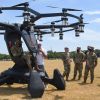 +3 +1
+3 +1This could be the Air Force's future flying car of choice
The Air Force is on the hunt for a Jetsons-style flying car, and service officials just got an eyeful of one of their very first prototypes. Secretary of the Air Force Barbara Barrett, Air Force Chief of Staff Gen. Charles Q. Brown, Jr., and Chief Master Sgt. of the Air Force JoAnne S. Bass were among the officials present for the first Agility Prime electric vertical takeoff and landing flight (eVTOL) flight demonstration at Camp Mabry on Aug. 20.
-
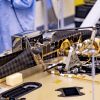 +3 +1
+3 +1It's alive: NASA powers up first Mars helicopter during Perseverance rover's space flight
NASA already has some good news to share about its Mars Ingenuity helicopter, the high-risk, high-reward experiment that's destined for a date with the red planet. Ingenuity launched as part of the Mars 2020 mission in July.
-
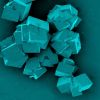 +20 +3
+20 +3Highly efficient process makes seawater drinkable in 30 minutes
Access to clean, safe drinking water is a necessity that’s worryingly not being met in many parts of the world. A new study has used a material called a metal-organic framework (MOF) to filter pollutants out of seawater, generating large amounts of fresh water per day while using much less energy than other methods.
-
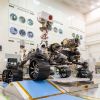 +9 +1
+9 +1NASA Perseverance rover and its epic Mars mission: Everything you need to know
NASA's Perseverance rover hopes to answer our biggest burning question about Mars history: Did the red planet once host life? The dry, dusty Mars we know today was very different in the deep past. Humanity's latest rover is making a beeline for an area of Mars that was once home to a lake, a perfect place to look for signs of ancient microbes.
-
 +28 +4
+28 +4This engineer published scientific papers using a Lego microscope
For Yuksel Temiz, photographing extremely tiny subjects is just part of his job as a microelectronics engineer at IBM’s Zurich Research Laboratory. Temiz works on minuscule devices that use microfluidics: a type of tiny, liquid-based circuitry that, instead of using metal wires, directs the flow of liquid through hair-thin channels like a microscopic canal system.
-
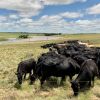 +6 +1
+6 +1These farmers say their cows can solve the climate crisis
Danie Slabbert points toward the cattle that brought his farm back to life. Down the slope ahead of him, 500 black Drakensberger and mottled Nguni cows graze cheek by jowl. The Free State farmer gestures with his giant shepherd's crook.
-
 +2 +1
+2 +1Falcon 9 launches final first-generation Dragon
A SpaceX Falcon 9 lifted off March 6 and placed into orbit a Dragon spacecraft on the final flight of that version of the cargo vehicle. The Falcon 9 launched from Space Launch Complex 40 at Cape Canaveral Air Force Station at 11:50 p.m. Eastern. The Dragon spacecraft separated from the rocket’s upper stage in low Earth orbit nine and half minutes later.
-
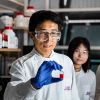 +17 +7
+17 +7Researchers at the University of Queensland, Australia—claim solar efficiency breakthrough for flexible 'skin'
The development of next-generation solar power technology that has potential to be used as a flexible ‘skin’ over hard surfaces has moved a step closer, thanks to a significant breakthrough at The University of Queensland. UQ researchers set a world record for the conversion of solar energy to electricity via the use of tiny nanoparticles called ‘quantum dots’, which pass electrons between one another and generate electrical current when exposed to solar energy in a solar cell device.
-
 +20 +3
+20 +3Oil and gas firms 'have had far worse climate impact than thought'
The oil and gas industry has had a far worse impact on the climate than previously believed, according to a study indicating that human emissions of fossil methane have been underestimated by up to 40%. Although the research will add to pressure on fossil fuel companies, scientists said there was cause for hope because it showed a big extra benefit could come from tighter regulation of the industry and a faster shift towards renewable energy.
-
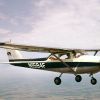 +4 +1
+4 +1Why the Cessna Is Such a Badass Plane
In December of 1903, Wilbur and Orville Wright made history with their bi-plane contraption that managed to do the seemingly impossible: it gave man the ability to fly. The concept was so unearthly, in fact, that private aviation first took off not as a means of transportation, but as a sideshow of sorts. In those pioneer days, seeing a man use technology to overcome gravity was such a novelty that early aviators made their living mostly through exhibition flights.
-
 +25 +5
+25 +5This Cloth Destroys Deadly Nerve Agents in Minutes
In Omar Farha’s lab at Northwestern University, the chemist and his team are working on an unusual craft project in collaboration with the United States Army. They mix powders and liquids into a paint-like consistency, dip swatches of cotton fabric into the liquid, and then leave the beige cloth out to dry. Through this process, they are creating fabrics that can rapidly neutralize some of the deadliest poisons known to humankind: nerve agents.
-
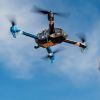 +25 +3
+25 +3Drones will fly for days with new photovoltaic engine
UC Berkeley researchers just broke another record in photovoltaic efficiency, an achievement that could lead to an ultralight engine that can power drones for days.
-
 +16 +4
+16 +4The Repair Shop (TV Series 2017– )
I love this show, great slow TV for makers and wannabe makers. Some of Britain's most skilled restoration experts breathe new life into much-cherished family heirlooms that are dropped off by members of the public, who reveal the personal stories behind the items.
-
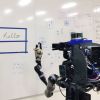 +4 +1
+4 +1This robot imitates human writing at a level that makes it difficult to distinguish
A project from Brown University in Rhode Island, United States, a robot is able to write and trace like a human being, even in languages he does not know and has never seen.
-
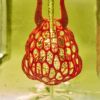 +3 +1
+3 +1Bioengineers clear major hurdle on path to 3-D printing replacement organs
Bioengineers have cleared a major hurdle on the path to 3-D printing replacement organs with a breakthrough technique for bioprinting tissues.
-
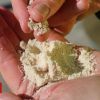 +3 +1
+3 +1Climate change 'magic bullet' gets boost
A technology that removes carbon dioxide from the air has received significant backing from major fossil fuel companies. British Columbia-based Carbon Engineering has shown that it can extract CO2 in a cost-effective way. It has now been boosted by $68m in new investment from Chevron, Occidental and coal giant BHP.
-
 +24 +4
+24 +4MIT and NASA engineers demonstrate a new kind of airplane wing
A team of engineers has built and tested a radically new kind of airplane wing, assembled from hundreds of tiny identical pieces. The wing can change shape to control the plane's flight, and could provide a significant boost in aircraft production, flight, and maintenance efficiency, the researchers say. The new approach to wing construction could afford greater flexibility in the design and manufacturing of future aircraft.
-
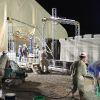 +20 +5
+20 +5How 3D-Printing Could Break into the Building Industry
Since Spain opened the first 3-D–printed pedestrian bridge in 2016, the push for printed architecture seems to be accelerating. Shanghai inaugurated the world’s longest printed concrete bridge in January, and the first-ever printed steel span is set to cross a canal in Amsterdam this year. Beyond bridges, the first 3-D–printed homes available to rent—five bulbous buildings in the Dutch city of Eindhoven—should hit the market by this summer.
Submit a link
Start a discussion




















